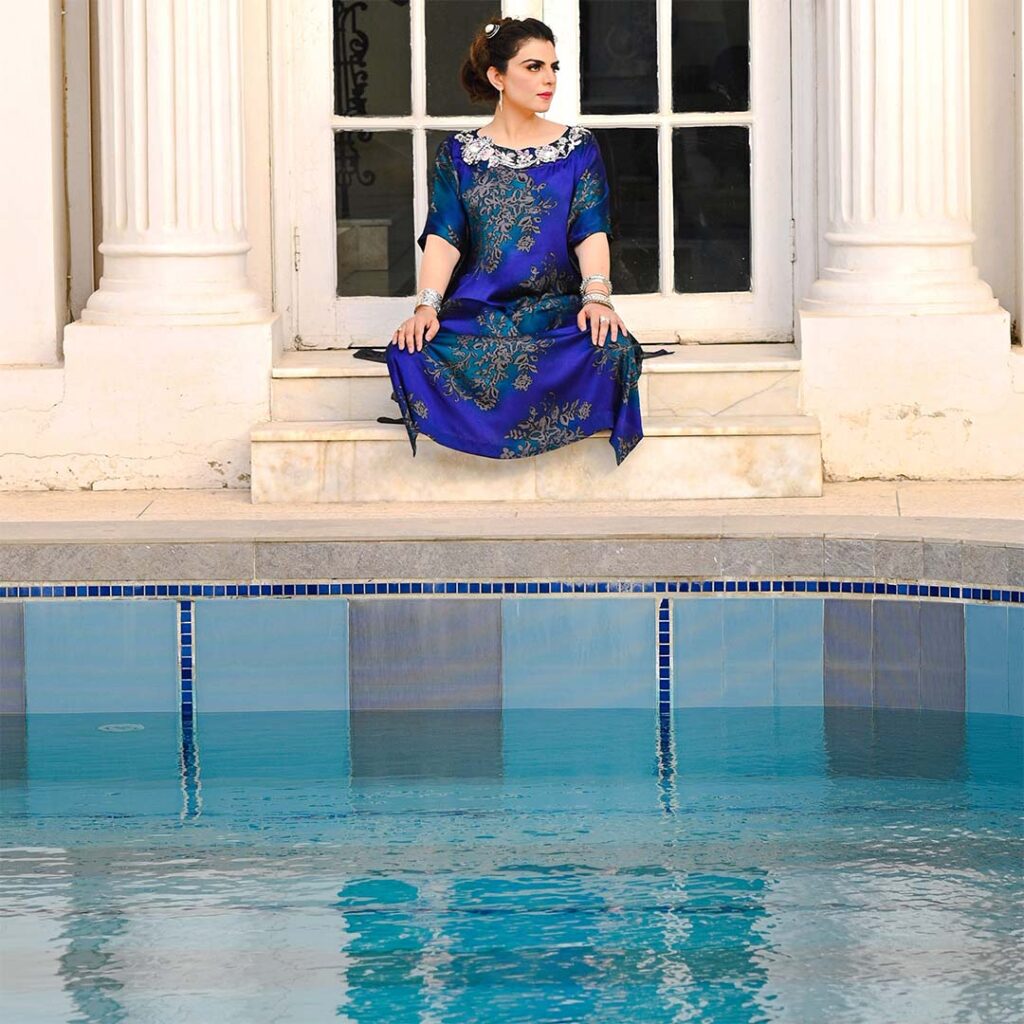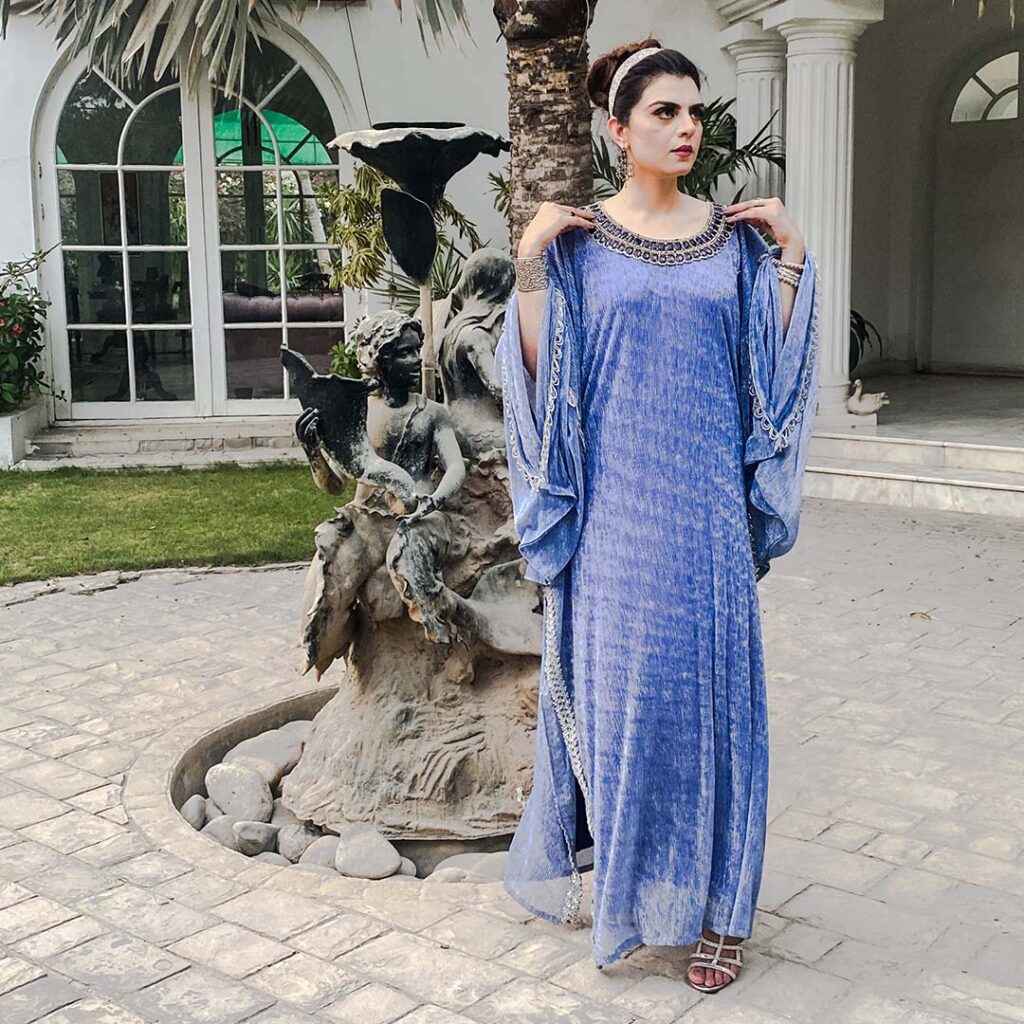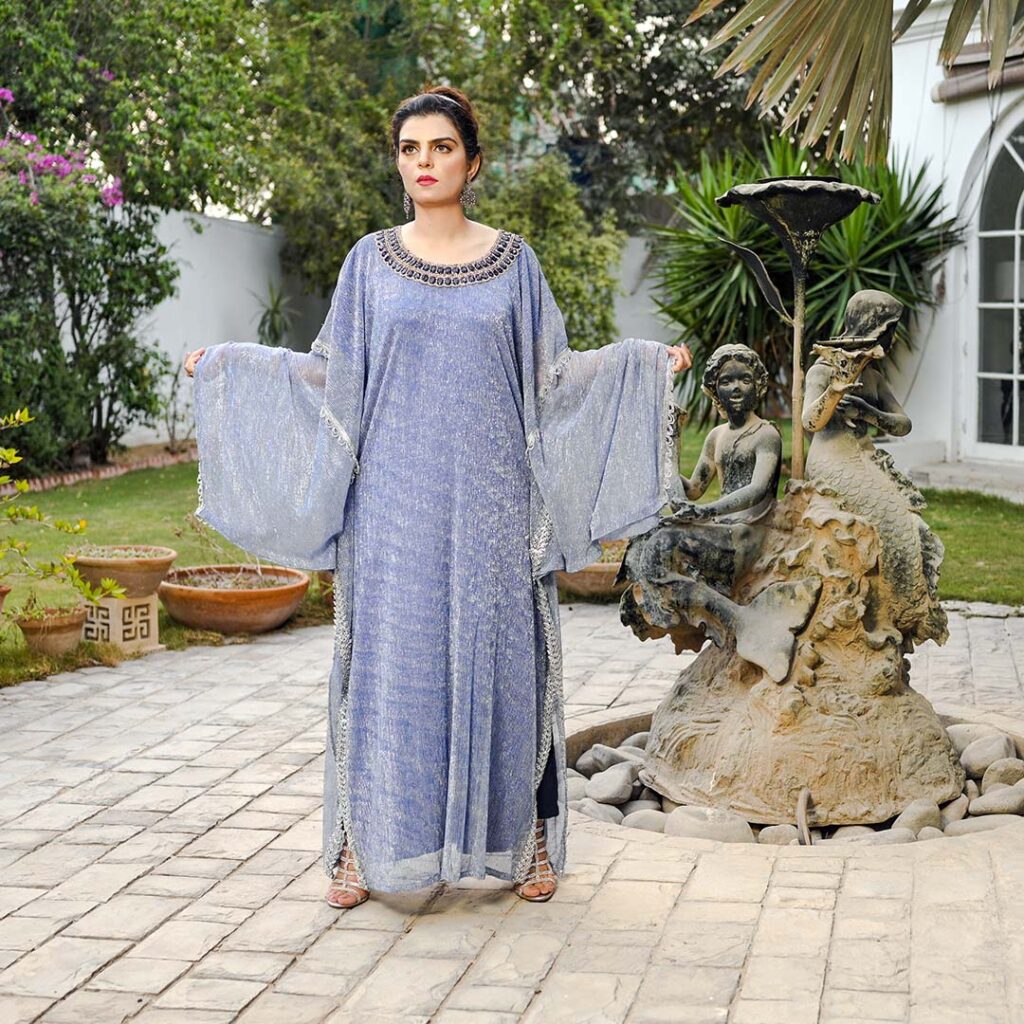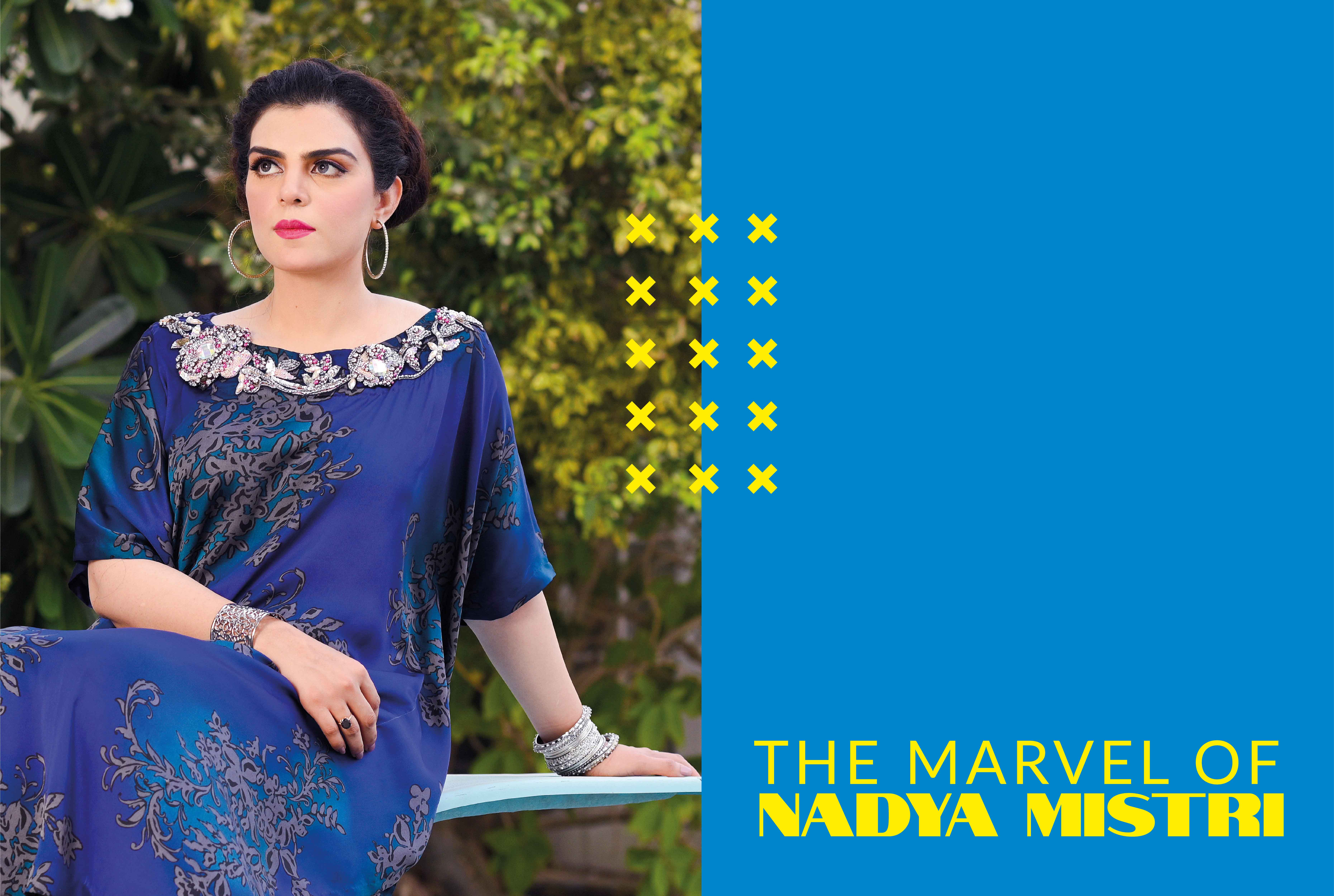Nadya Mistry stands as a trailblazing figure in Pakistan’s realm of style and business innovation. Her ability to consistently pioneer fashion trends both within Pakistan and on the global stage marks her as a visionary ahead of her time.
In 1998, Mistry inaugurated her design career in Karachi, Pakistan, introducing her inaugural ‘Egyptian Collection’. She initiated her success story by exporting her designs to the United Kingdom. A pivotal moment arrived in March 2000 when Mistry unveiled her avant-garde flagship boutique, located in Park Towers, Karachi, ushering in a new era of style.
Through her remarkable designs and innovative fabric techniques, Mistry has cultivated a global clientele, with her influence extending far and wide, particularly resonating in the United States. Additionally, she holds the distinction of providing exquisite embroidery work to international fashion houses.
She talks to Fashion Collection about her the ever-evolving fashion world.

Fashion Collection: What inspired you to pursue a career in fashion design, and how did your journey begin?
Nadya Mistry: I was always into art; sketching, painting, delving into sculpture and music. Growing up, my parents saw my inclination towards Fashion and encouraged and supported my choice to study it. I’m extremely blessed to have ended up in the hub of fashion, Paris. Here, I studied fashion design and acquired my initial training at Cerruti 1881. I then went to New York to complete another internship at Mary McFadden, after which I launched my eponymous label, Nadya Mistry.
FC: Can you describe your design philosophy and how it influences your creative process?
NM: Learn – Evolve – Create. Repeat!
FC: Please elaborate on your latest collection. What themes did you follow? Could you share the story behind it and the key elements that brought it to life?
NM: Fortuitously, I’m showing my new collection at a Bride & Groom show in Bangkok this month. I’m taking beaded ghararas, palazzos, embroidered memnis and of course formal Lehengas. This collection also comprises of luxury-pret pieces like asymmetric tunics, embellished kaftans and pure silk maxi dresses. The formals were mostly inspired by our traditional, wedding garments. The semi-formals are modern, easy to wear, bright, fun pieces.

FC: Fashion is constantly evolving. How do you stay ahead of the trends while maintaining your signature style?
NM: I follow international forecasts and adapt to make them my own.
I like a blend of old and new. I love ghararas! But I also love an haute couture gown or a fun tee shirt. My pieces have a lot of personality. A new-age, contemporary outfit interests me as much as an heirloom gotta piece edged with antique ’kiran’! I love playing with colour, with print, with both innovative and traditional embellishments, with form and fabric. I’m curious and I think that helps my work evolve!
FC: Sustainability has become a critical aspect of the fashion industry. How do you incorporate eco-friendly practices into your designs?
NM: Unfortunately, fashion, especially fast fashion is playing a major role in increasing global waste. At the moment sustainable, organic textiles are limited in variety and expensive. I strongly believe in up-cycling and recycling outfits and embroideries. One can always redo and re-use old stuff, especially formal and heirloom pieces. I hate waste and I think the best challenge is to use what you have creatively.
FC: Many designers draw inspiration from various sources. What are some of your favourite sources of inspiration, and how do you translate them into your work?
NM: I’m greatly affected by elements and events in my life; a movie, a mood, a circumstance.. it could be anything really, but I feel what inspires me is my reaction to those things and situations. That’s what I incorporate and try to translate into my work.
FC: Collaboration is common in the fashion world. Could you tell us about a memorable collaboration experience and what you learned from it?
NM: Collaboration is common in the Western world. Unfortunately, not in Pakistan. I’ve been lucky to work with International designers. A fun project was with a Swiss designer, who used my embroideries for his Couture Collection.

FC: Technology has been revolutionizing fashion. How do you use technology in your design process or incorporate it into your collections?
NM: At the moment, we use the basics; design and editing softwares. Technology is something that greatly interests me and I hope to use on a more sophisticated level in the future, when it’s more easily accessible.
FC: As a designer, how do you balance creativity with commercial appeal to meet the needs of your diverse clientele?
NM: That’s always a tricky balance. If one succumbs to commercialism the result is fast fashion and disastrous wastes. High production volumes have never appealed to me. I prefer to make exclusive, custom-designed outfits, that are handed-over and used by the client almost instantly.
FC: Fashion has the power to make a social or political statement. Have you ever used your designs to address specific issues, and if so, which ones?
NM: Although, some causes are quite serious and significant to me, I’m not much of an activist. Since I enjoy humour, intellect and making bold fashion statements, I hope these do reflect in my work in various ways. Having said that, I remember a magazine (in a year riddled with fear of fundamentalism) asking designers to do a shoot of their interpretation of a burkha. I dressed the female model in a strappy slip dress and the male model in a regular black burkha!
FC: Runway shows and fashion weeks are essential for designers to showcase their work. How do you prepare for a show, and what do you hope the audience takes away from it?
NM: Ramps are a great platform for designers to enjoy and flaunt their work. A good model adds the right volume to a garment, there’s action, ambiance, music, drama and of course an audience! All these provide the perfect stage for a collection to come alive. It’s a big adrenaline boost and if the collection is met with appreciation and applause, that makes all the hard work worth it

FC: The fashion industry can be fast-paced and demanding. How do you handle stress and maintain your passion for design?
NM: I don’t mind the pace or demand, what frustrates me is irresponsible workers, not respecting or taking ownership of their work. I believe in meritocracy and don’t like it when people around me are not motivated or push themselves enough.
FC: Your designs have gained popularity among celebrities and influencers. How does this exposure impact your brand and design approach?
NM: This kind of exposure is of course wonderful, especially with social media. It has taken marketing to a totally different level. But I think every customer is important and a celeb in their own right. Anyone who’s wearing my outfit is promoting me.
FC: What advice would you give to aspiring fashion designers who are just starting their journey in the industry?
NM: Have higher standards, innovate, push boundaries and think outside the box. And don’t forget to have fun while you’re at it.
FC: Looking back at your career, what has been the most rewarding moment or achievement as a fashion designer?
NM: I know when I launched my career, my work, style and modus operandi created a revolution in the otherwise stagnant Pakistani fashion industry. I hope I inspired many young people to study and take up fashion as a serious career. Also, I think I made wearing glasses cool! Hahaha!
FC: What’s your favorite part about being a fashion designer?
NM: Being an artist, and being able to create is an extremely amazing feeling. When I create my Art, I feel closest to God!

FC: What’s your greatest strength as a fashion designer?
NM: I feel I have a gift and affinity for colours and colour combinations. I love doing embroidery especially on a bigger canvas like bridals. Since I have a natural sense of East/ West balance, it helps me see garments as fusion wear instead of ‘costumes’.
FC: What are latest fashion trends prevailing in Pakistan?
NM: I’ve always looked at the West for fashion trends and forecasts. I believe the Pakistani fashion is quite a stagnant, non-evolving, jump-on-the-same-bandwagon kind of scene.
FC: How has the fashion scene evolved in Pakistan?
NM: It really hasn’t. What I did 20 years back, people are doing now. If anything we have gone back in time! Except for the co-ord suits inspired by the West, the big shalwars and huge costume-like ensembles and kurtas are really a thing of the distant past. Not many recognise this but I was the one to introduce pants as an alternative to shalwars. I think shalwars are the most unflattering garments ever made. And we need to get over the Kurta staple!
FC: What is one iconic moment in your life as a designer?
NM: I’ve had many momentous events as a designer, but I believe the best is yet to come!

